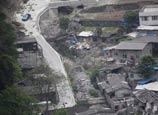
SUVA, April 25 (Xinhua) -- A hundred and twelve heads of cattle from 20 farms in Fiji's central division have tested positive for brucellosis so far this year, local media reported Thursday.
Director Animal Health and Production Tomasi Tunabuna told the Fiji Broadcasting Corporation that authorities were in the process of removing those cattle from the farms so that they can be slaughtered to avoid further contamination.
Despite the restriction on the movement of cattle, farmers were still continuing to do so, said Tunabuna.
"We've made all efforts in trying to address dangers that we will have to the public if we don't really strictly follow the restrictions of the movement of cattle and the result is now we still have the disease in the central division," Tunabuna said.
To date, over 1,000 cattle have been slaughtered since Brucellosis was detected in farms in the country four years ago.
The Animal Health and Production Team of the Secretariat of the Pacific Community Land Resources Division continued to assist the Animal Health and Production Division of Fiji's Ministry of Primary Industries (MPI) with brucellosis eradication and rehabilitation work in the dairy industry.
After the outbreak of brucellosis in cattle in June, 2009 in the Tailevu province of Fiji -- a major dairying area with some 19, 000 dairy cattle -- the Animal Health and Production Division of the MPI embarked on a stringent test and slaughter campaign to eradicate the bacteria from cattle herds in the country. This reduced the number of dairy cattle, thereby reducing the production of whole milk by the dairy sector.
Rehabilitation efforts by the MPI have focused on the introduction of heifer cattle and breeding bulls from New Zealand, and inputs into pasture and fencing improvements. Farms that are declared free of bovine brucellosis and tuberculosis will be eligible to receive New Zealand cattle from the MPI.
















 Giant pandas safe in quake-hit zone
Giant pandas safe in quake-hit zone


![]()
